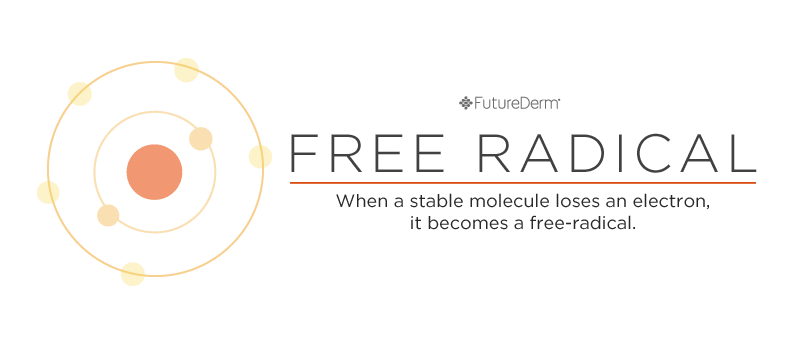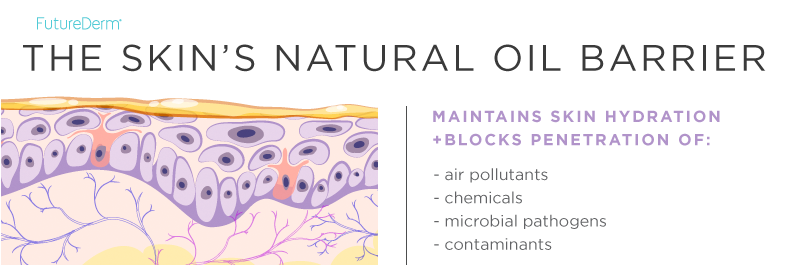For the past decade, popular culture has embraced the need for us to “go green.” American women in particular have taken to the trend, carrying reusable cloth bags, glass water bottles, and reducing home energy usage. Perhaps the biggest part of the movement has come this week, with groundwork carefully being laid for mass international reforms. Many world leaders and negotiators are making pledges to reduce emissions, including the United States, which has promised to reduce greenhouse gas emissions 26 percent from 2005 levels, and China, which has promised its emissions will peak by 2030. The reason? The pledges are designed to avoid the critical level of 2 degrees Celsius of warming, the number scientists have identified as a dangerous tipping point.
While we are making efforts to protect the environment, an increasing amount of research demonstrates we need to protect our skin from the environment. An alarming number of studies show that pollution, cigarette smoke, general grime, and of course UV exposure are far worse for the skin than once believed. Below, I will detail how the biggest culprits are affecting your skin, and what you can do about it.
Pollutants Like Soot and Diesel Exhaust are Incredibly Aging
Soot and diesel exhaust are coated in polyaromatic hydrocarbons, which are able to penetrate the skin exceptionally well. These agents will bind to skin cell receptors and cause oxidative stress and activate genes involved in aging.
According to Jean Krutmann, a toxicologist and professor of dermatology and environmental medicine at the University of Dusseldorf in Germany, “Pollution causes pigment changes and wrinkles. [Soot and diesel exhaust] trigger genes responsible for wrinkle formation and inflammation, and melanocyte proliferation that causes uneven pigmentation.”
How to Protect Your Skin Against Pollutants
Since soot, diesel exhaust, and other forms of environmental pollution contribute most to free radical-triggering hyperpigmentation, reach for antioxidant-rich skin-brightening formulations. Two of my favorites are FutureDerm Vitamin CE Caffeic Serum 16.0+ 2.0, with antioxidants in high concentration, including 16% vitamin C and 2% vitamin E; and Skinceuticals Advanced Pigment Corrector, with lightening antioxidant 0.5% ellagic acid, 1.1% hydroxyphenoxy propionic acid, yeast extract, and salicylic acid. Subjects notice dramatic differences in hyperpigmentation in just twelve weeks.
The Effects of Pollution are Worse for Your Skin When it is Very Hot or Very Cold Outside
When it is very hot outside, your skin will naturally absorb substances faster. The slight dilation in the pores and very small increase in metabolic rate play a role, but heat and UV light together cause for chemical reactions to speed up most.
When it is very cold outside, there is more particulate matter in general. While your pores are tighter and metabolic rate is ever-so-slightly lower, the increase in readily-absorbed particulate matter poses a risk.
What makes the biggest difference in the effects of toxins are the sizes of the matter.
- If the toxins in the environment are small and permeable, they will be uptaken by skin cells and processed the fastest. After a period of time, the ingredients will be secreted out of the skin cells and will enter the circulation.
- If the toxins in the environment are too large to be uptaken by skin cells, they will move between the skin cells for a shorter period of time. After a while, these ingredients will also enter the circulation and be excreted from the body.
- If the toxins are not absorbed by your skin cells, they may also be temporarily absorbed by some glands. in a process known as ”appendageal absorption”. In this process, there are ”reservoir effects” in which substances may be stored within the glands for absorption over time before being released into the bloodstream. This includes ingredients like aluminum, which has been found to be retained in tissues for substantial lengths of time.
How to Protect Your Skin on Very Hot and Very Cold Days
Consider using a moisturizer with squalene. An experiment studying the quenching reaction of singlet oxygen and scavenging reaction of free radicals by squalene concluded squalene provides natural skin protection against high exposure to the sun (Biochimica et Biophysical Acta (BBA)-Lipids and Lipid Metabolism). Squalene also acts as a natural skin barrier against particulate matter. As you age, squalene levels deplete, due to less production and reduced retention, which is part of the reason why aging tends to accelerate as you get older.
I highly recommend using a moisturizer with squalene. Consider Perricone MD Hypoallergenic Nourishing Moisturizer, an excellent protective hydrating moisturizer with squalene for use under sunscreen daily.
Just make sure you wash it off nightly: While providing an enhanced barrier between pollutants and your skin is vital, your elevated basal body temperature at night will cause for increased absorption of ingredients, including the moisturizer and the unwanted particulate matter.
Cigarettes Causes Wrinkles — Even if You Quit Years Ago
A 2002 study in the International Journal of Dermatology found that a higher degree of microscopic wrinkling was noted in individuals 20-39 who smoked previously than in individuals of the same age who never smoked. The same study found that older individuals who smoked between 11 and 19 years were 1.75 times more likely than non-smokers of the same age, sex, and social status to exhibit noticeable skin wrinkling.
However, quitting does help: Those who smoked more than 19 years were almost twice as likely — 2.93 times more likely than non-smokers — to exhibit conspicuous skin wrinkling. Therefore, the effects of smoking on the skin only worsen with time and severity. The only way to be damage-free is to never smoke at all; the next best policy is to quit as soon as possible.
Smoking causes wrinkles in three primary ways. The first is that cigarette smoking has been found to activate matrix metalloproteinases, enzymes which degrade collagen and elastin fibers, within the skin (Lahmann et. al.). Matrix metalloproteinase activation causes skin to prematurely wrinkle, sag, and become more transparent.
A second factor is that smoking has been shown to decrease blood flow to the skin, which prevents the skin from getting oxygen and other nutrients it needs. Studies show prolonged decreases in blood flow damages connective tissue components that are important to maintaining the integrity of the skin (Grady and Ernster, 2002).
The third way smoking accelerates aging is by increasing oxidation activity and decreasing vitamin A levels. A study in the American Journal of Clinical Nutrition found that supplementation with 1000 mg vitamin E partially reduced the oxidation activity, but not entirely.
How to Protect Your Skin from Cigarette Smoke
If you don’t smoke, don’t start. And if you do smoke, reduce the habit as much as possible, making cessation the ultimate goal.
Fight the effects of cigarette smoke by negating its deleterious effects. Since smoking upregulates MMPs and takes down vitamin A levels, make sure you apply a retinoid (a known MMP fighter and form of vitamin A) nightly. I recommend our FutureDerm Time-Release Retinol 0.5 or Skinceuticals Retinol 1.0.
Since smoking decreases blood flow to the skin, use produces with active forms of niacin, which increase blood flow to the skin. I like NIA 24 Physical Cleansing Scrub with nicotinic acid at least once per week. (I’ve never used anything that caused more of a blood flow increase to my face!)
In addition, eat a diet filled with antioxidant-rich fruits and vegetables, and apply as many concentrated antioxidants as possible to your skin.
Bottom Line
Calling anything a “toxin” may be an exaggeration, but pollution, cigarette smoke, and UV light are far worse for the skin than any of us had anticipated. Recent research shows it is necessary to boost up your skin when going outside, using agents like a niacin-based scrub once per week (NIA 24 Physical Cleansing Scrub), a daily vitamin CE serum (FutureDerm Vitamin CE Caffeic) to fight pro-oxidant particulate matter; a daily squalene-based moisturizer (Perricone MD Hypoallergenic Nourishing Moisturizer) as a physical barrier under sunscreen; and a nightly retinoid (FutureDerm Time-Release Retinol 0.5).
Got questions about pollutants? Would love to answer!




